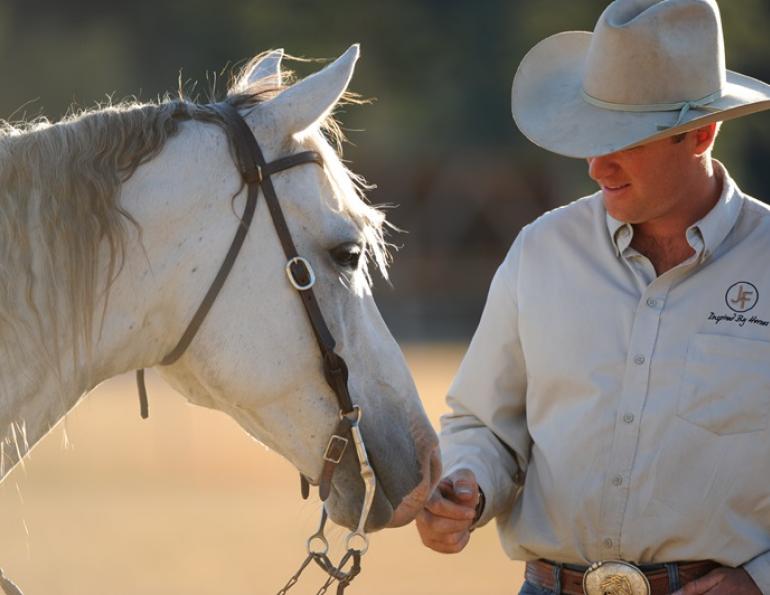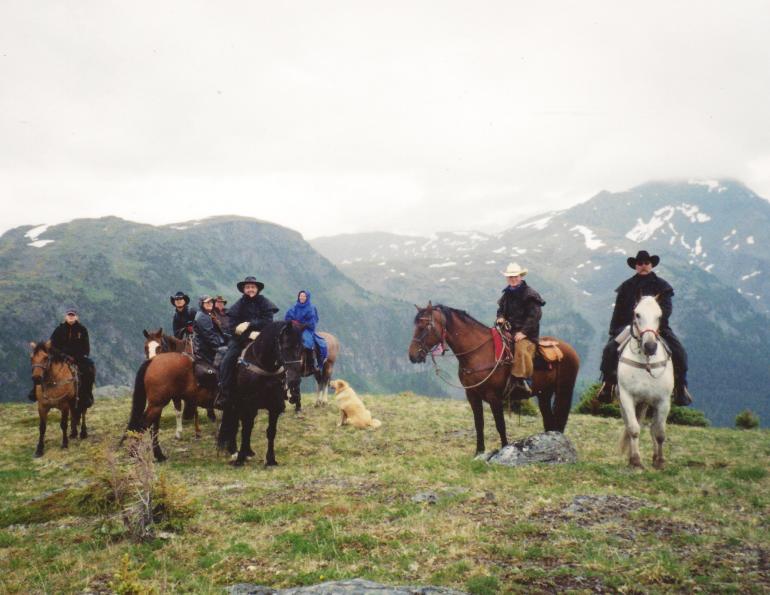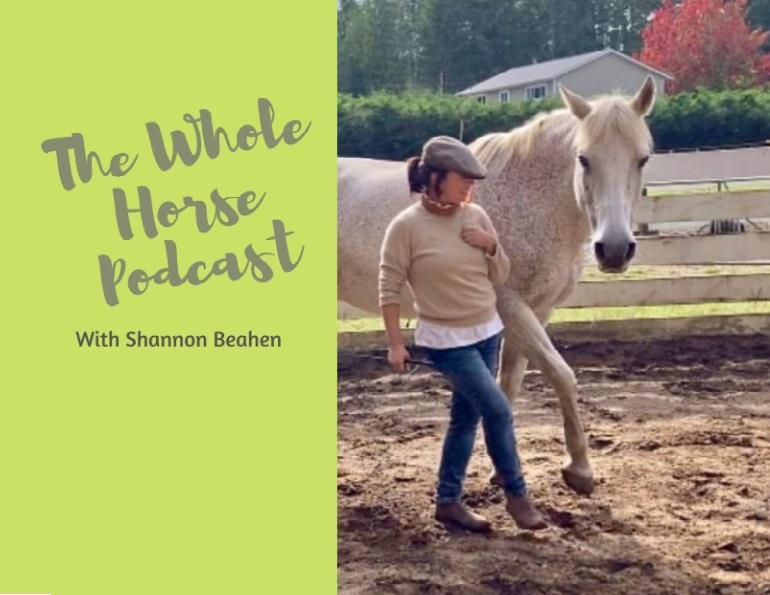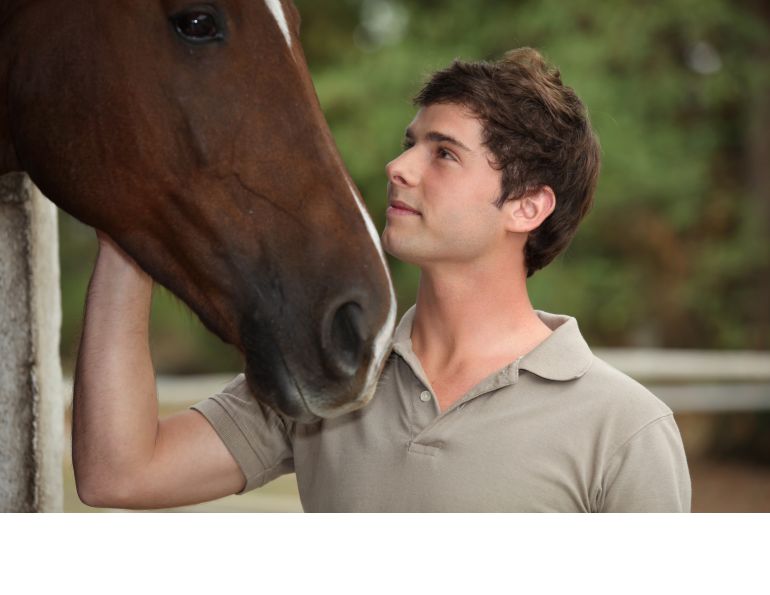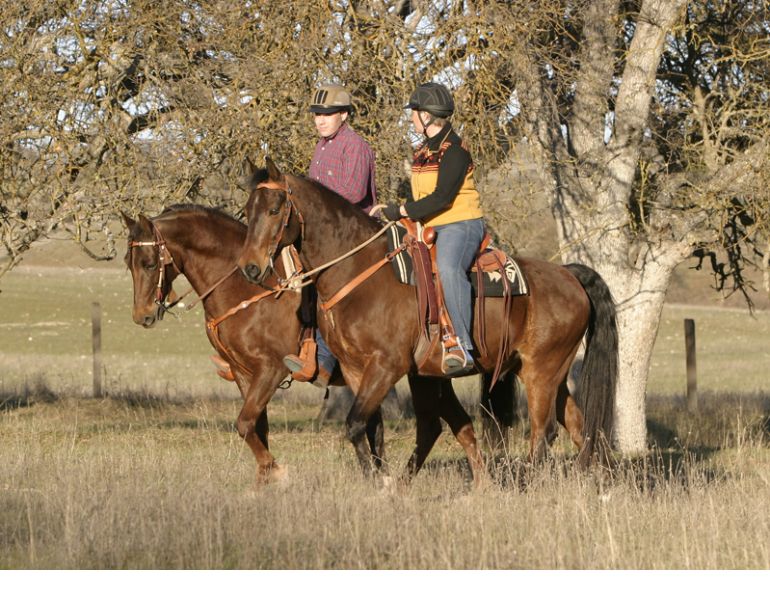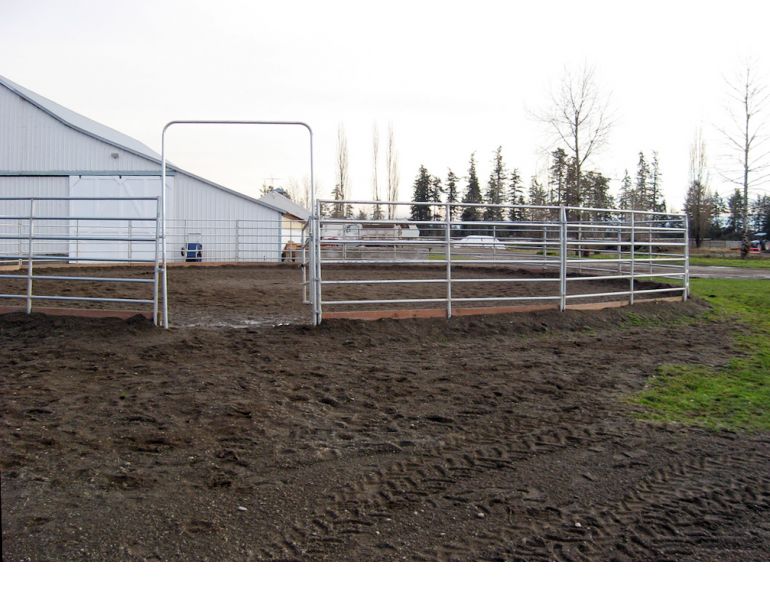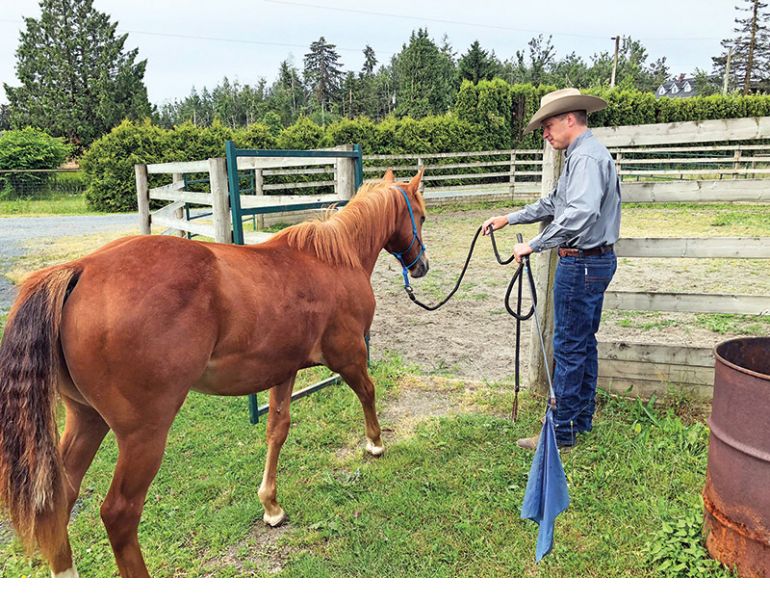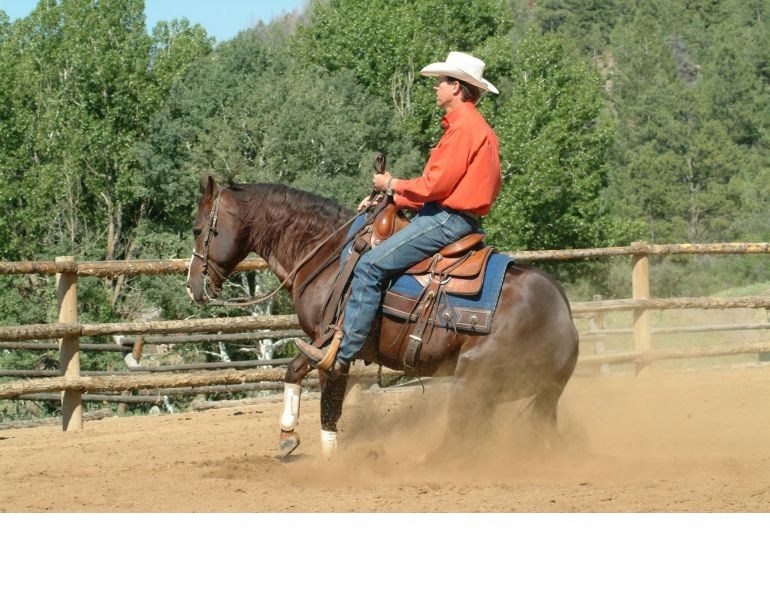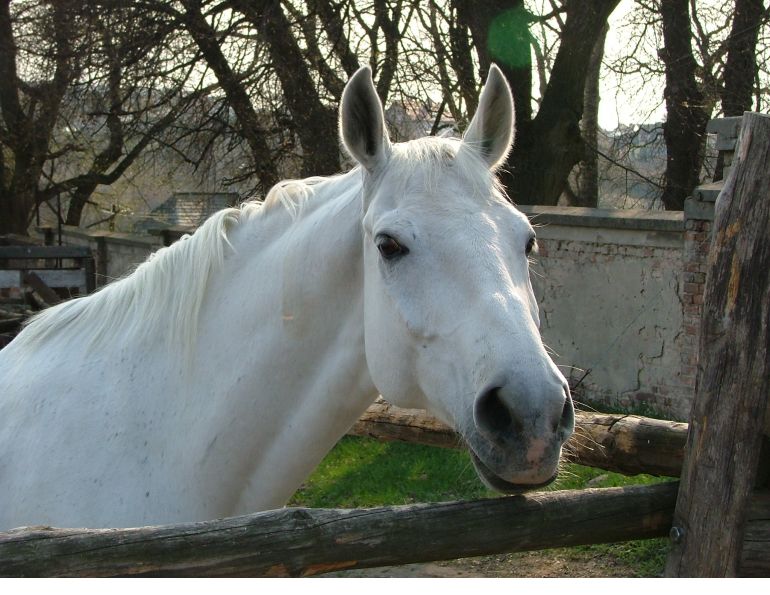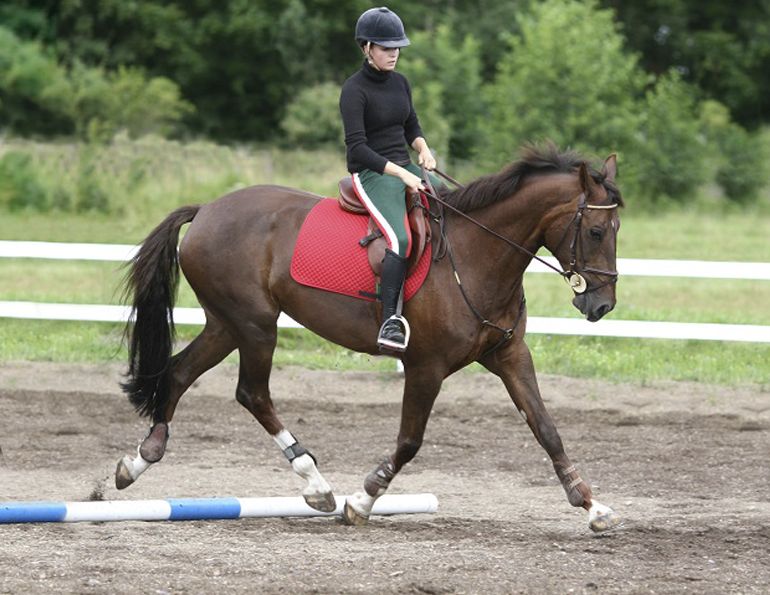By Jonathan Field
Horsemen are a rare group of individuals, no matter their age or gender. In my life, I have been fortunate to meet and study with a few horsemen whose qualities have changed and shaped my way of thinking. In this article, I will talk about what I have learned from those gifted few and outline five points that you can use to be better in every session with your horse.
Simply owning or riding a horse doesn’t make one a horseman. Winning a ribbon or being knowledgeable of lineage or breeding horses doesn’t automatically make someone a horseman either. Horses decide it... and they decide regularly!
To me, a horseman understands what the horse is communicating and is willing to adjust to better relate and teach the horse. A horseman never blames or faults the horse! A real horseman will never say, “This horse is no good.” Instead, he or she will recognize the horse’s weaknesses, its confusion, and be willing to spend the time required to get through those challenges in order to build a strong and trusting relationship. A horseman sees the potential in all horses, even the difficult ones. The horsemen that I have met are actually attracted to the challenging horses and keenly look for the potential hidden within each.
Another benefit of becoming a horseman is that horses recognize one quickly. A horse can tell even when being approached. The speed, the posture, and the timing of the person walking up to the horse can tell the whole story: is the person a push-over, should he be feared, or should he be respected and trusted?
Horses find comfort in a true horseman! I have even seen some horses try to leave their owners to go with the horseman. It is quite remarkable to witness.
Becoming a true horseman is an exciting journey, one that begins with a simple change of thought: “I will try every single moment to be better at understanding, communicating, and building a rapport with my horse.” It is a lifelong path and nothing compares to it. Why? It is the nature and honesty of horses.
When a horse looks to you truly as a friend and as a leader, you share something that people, including Kings and Queens, have been pursuing for centuries. It can’t be bought or forced. One caution holds true at this point: while on this path, you will feel every conceivable emotion — from excitement and joy, to frustration and fear. However, the special moments shared with a horse are unparalleled; that timeless moment when you connect is immeasurable. Aside from my children, some of the most defining moments of my life are with horses and will be with me forever.
I would like to share one of these surprisingly simple moments that remain with me as if it was a minute ago.
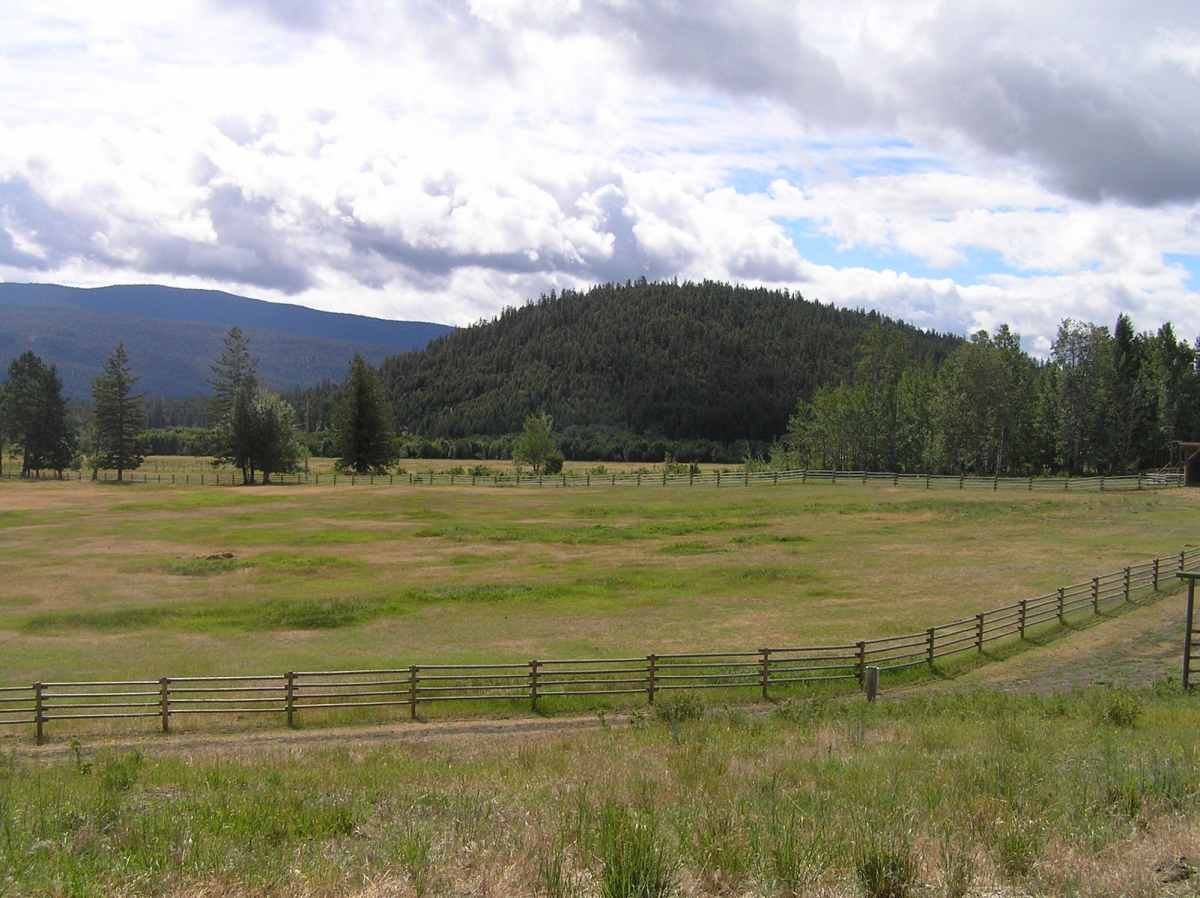
The James Creek Ranch in Merritt, BC. Photo: Angie Field
We had just purchased the James Creek Ranch, situated in a beautiful little valley just outside of Merritt, BC. With the James Creek running through the middle of the property, it is horse heaven. I was in town most of the afternoon and didn’t get back to the ranch until just after the sun had set behind the mountain. Not usually being a nostalgic type, I remember regretting not seeing it go down.
A quick thought came to mind: a long, winding trail to the north would take me to the other side of the shadow that the mountain was casting to a little saddle in the ridge line. It was a long ride and time was ticking. I decided to catch up my long-trotting horse, Quincy, and go for it!
When we got to where I thought I could catch the last glimpse of the sun, I saw that the climb up to the ridgeline was almost straight up and full of bush and trees. After a quick assessment, I decided that Quincy and I should go for it! As we scrambled up the steep incline, I dismounted and let Quincy lead the way while I held on to his tail, letting him pull me up. He carefully picked his way along the slope and rested when required. Completely winded and drenched with sweat, we both finally crested the top and caught sight of the last half of the sun as it dropped below the horizon. I had my arm over Quincy’s neck and I swear I could feel Quincy appreciating the moment just as much as I was.
In that moment, all that this horse and I had been through resonated with me. Quincy was an extreme problem horse that would rear and then bolt. Getting Quincy to trust me was my biggest challenge, let alone have him become a safe riding horse that would pull me up a mountain. Since then, Quincy and I have received standing ovations from enthusiastic horse people. While that is always very gratifying, the connection we shared in that moment, on the side of a mountain in the absolute middle of nowhere, was incomparable to most moments in life. We stayed for an hour after the sun went down before navigating our way home in the dark.
I can hear you sigh, but back to the present and a brief outline of five big picture concepts that I take into account in my relationship with horses, and that you can use to be better in every session with your horse.
Tame and Befriend
When I meet any horse I always ask myself: how tame is this horse? Does he trust people? This question is important because if a horse harbours fear then you can never get deep enough into his psyche to affect lasting change. Sadly, it never ceases to amaze me how many horses, including “finished” horses, still have fear and mistrust when it comes to humans. If not fear, then sometimes it is just a general dislike. The root of this is that they’re not truly tame and don’t look at their people as friends.
Personally I see value in a horse liking me just as he would another horse. I take the time to be sure of this and revisit this feeling often. The more I expect, the more I make sure we’re still friends. When the horse wants to be friends with you, he will check in with you all the time.
Become a Leader in Your Horse’s Eyes
Once I’ve established a joint desire for a friendship, I begin to establish myself as a leader in the horse’s eyes. I want my horse to see me as a worthy leader, much like how he looks for leadership qualities in the boss of the herd. I want the horse to regard my personal space and to trust me to bring him away from the herd, all while maintaining the friendship that I established earlier. When you have true leadership and trust with your horse, you move away from the constant debate of your horse saying “Is it safe to go? I’m not sure... I’ll have to sniff every new thing I encounter along the way just to be sure.” Instead, your horse will develop a trust in you that says “I’m safe because you are here and I trust your judgment,” exactly as he would were he to follow the alpha in a herd.
Develop Great Communication
Now that friendship, trust, and leadership have been established, I focus on better understanding my horse and teaching him to better understand me. I want an open line of communication that I refer to as an “intent based” communication rather than solely a “pressure/stick/spur based” communication. Here is a natural example:
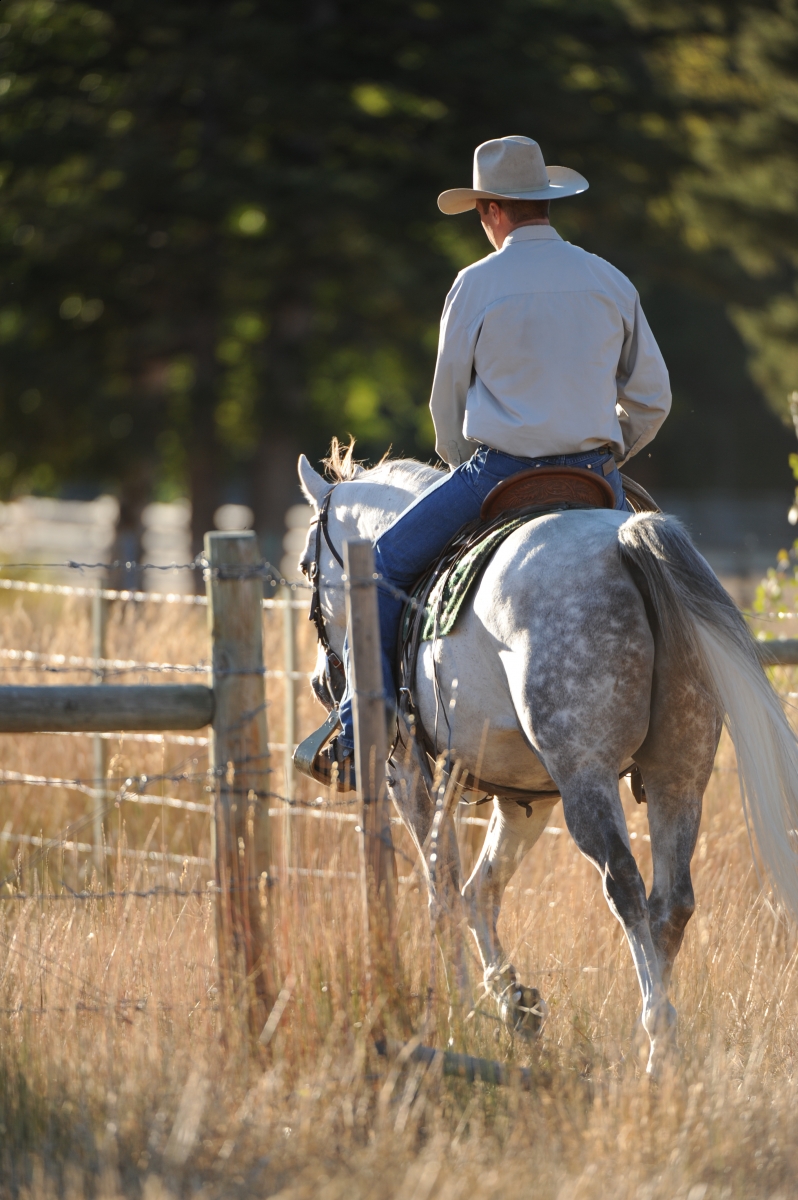
Horses find comfort in a true horseman. Photo: Robin Duncan Photography
Horses in a herd follow the lead mare’s intent. She flicks her ear left and then turns her head. The rest of the herd follows simultaneously. She didn’t use pressure in that moment but simply made her intention known. This level of communication was brought on through pressure and release lessons that she had already taught the herd earlier on. At first, her communication would be much more exaggerated: pinned ears, bites, and a few kicks. Her goal would be to refine her language so that just a change of intent, and its corresponding body language, would yield the same result.
Great communication happens when properly applied pressure leads to the subtlety of intent.
Teach Patterns
After I have accomplished the above, I begin to set key patterns. These patterns teach two fundamental training goals with the horse’s body: bend and straightness. Bend is taught mainly inside of a circle program and straightness is taught through asking for body control and added power. These skills are taught to the horse and rider through repetition. However, repetition is something that must not be overdone! At this stage, repetition overdone can cause the horse to disconnect from you and connect to the pattern.
Here are some thoughts on repetitive patterns and the delicate balance: The key reason for pattern training is that it will move certain skills into the subconscious mind so that your horse doesn’t need to cognitively think through every exercise. For example, if our minds never became subconsciously trained to do things, we’d have to relearn how to drive a car every time we got into it. As it is, we are able to drive, listen to the radio, visit with a friend, and safely get where we are going, all with a horse in the trailer behind us. It becomes easy because we can do complicated tasks all in our subconscious minds. The secret here is not to over-pattern your horse. You don’t want the pattern to take over while your horse becomes a non-thinking trick horse. You will know this is happening when you see your horse go through all the moves that he knows, trying to get you to quit whatever you’re asking him to do.
Teach patterns so that it clears the mind for new communication and make sure the pattern doesn’t take over.
Give Purpose
Giving your horse a purpose after teaching him all the basic exercises is probably one of the most powerful things that you can do to bring the two of you together and move forward. I never want my horse to blame me for what we’ve done together, be bored with me, or look at me as a drill sergeant he hates. I always have a “powerful reason why” I do everything I do with him. I have a purpose in mind, a goal. At the end of each training session is the purpose, which is always followed by a reward of rest and relaxation for my horse. Once you complete the purpose, you now have a just reason to go back and build up the weak links.
For example, you may notice that your horse’s shoulder is really dropping in. If the horse drops the shoulder and doesn’t hold proper body posture he could miss a lead change, he could slip on the trail, or let the cow beat him. You’ll find it much more fun to get the details right in practice so that when you go back and give your horse a purpose or a job to do you will be able to tell if you affected the change. Without purpose, riding circle after circle is pointless, boring, and frustrating, both to you and your horse. I see so many horses doing their “job” with a terrible taste in their mouth. So much talent is lost and exuberance evaporated because there is never a reason for what is being done.
My personal nemesis is a trail dug deep near an arena rail showing the thousands of pointless laps that were carried out by obedient horse-bikes.
On self-reflection, becoming a horseman takes more than one skill! To me, becoming a horseman is more than “pull here three times and kick there.” The journey to become a true horseman is a constant drive to improve and to dream of accomplishing more with horses. It is motivated by a passion for knowledge. It’s not about ego, recognition, or a ribbon! It is about the quiet moments when a horse feels back to you and seems to say, “You’re getting there” or “I feel you.” It warms my heart. I believe I am a better person, husband, and dad because of horses and this experience.
Related: Mount Your Horse Safely
Related: More Fun and Why It's Important!
Main photo: Jonathan Field and Quincy at the James Creek Ranch. Quincy, now a trusting horse who wows audiences in demonstrations, used to be a problem horse. Credit: Robin Duncan Photography



